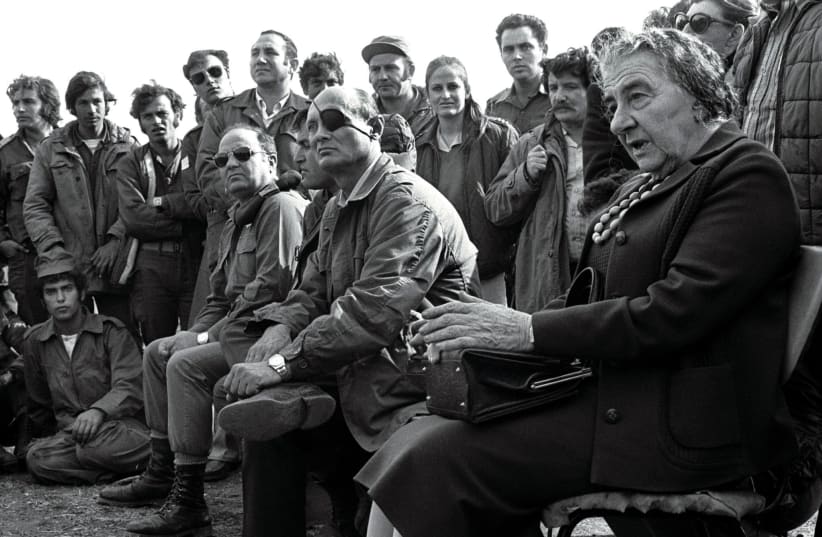The Israel State Archives on Thursday disclosed new documents from then-prime minister Golda Meir’s office, related to the 1973 Yom Kippur War and its aftermath.
Although voluminous materials have been disclosed over the last 50 years, significant new documents were found regarding journal entries from Meir’s secretary Eli Mizrachi.
Previously, archives researchers had found and disclosed 200 pages, but by using new artificial intelligence (AI) tools, they found around another 1,000 pages of Mizrachi’s entries.
The new Mizrachi entries and other new items address a variety of issues, from evolving hour-to-hour status reports of the battles on the various fronts, to contacts with the US, the situation at the UN, the impact on the Israeli home front, the ceasefire, and post-war negotiations.
The archives also for the first time reveal that Israeli officials' code name for Jordan's king at the time, King Hussein, was "Lift."
Probably, what is most distinctive about the new materials, such as Mizrachi’s journal entries, is getting a minute-to-minute feel for Meir’s comings and goings, exactly who she was meeting with, for exactly how long, and exactly when she made certain decisions or approvals, as opposed to only knowing a decision was made on a certain day generally.
Going over scanned photos of the journal, one can even see when Mizrachi runs out of ink in one pen and switches to another color.
Below is a translated excerpt from a series of meetings and interactions from the new materials:
At 6:10 a.m. on October 7, 1973, [Prime Minister’s Military Secretary] Brig.-Gen. Israel Lior reported by telephone to the prime minister about the deterioration of the situation in the Golan. The prime minister was updated on the decision to evacuate the villages in the Golan. The prime minister was updated that the defense minister was leaving for Holland. The prime minister was updated that the situation in the North was grave and that the air force was going into action in the North to support the ground forces.
At 6:15 a.m., Lior reported the same items to Deputy Prime Minister Yigal Allon and Minister Israel Galili.At 7:20 a.m., the prime minister arrived at her bureau and went out to “the pit” (the underground defense command center) to hear a report about the situation on the various fronts.
At 8:05 a.m., she returned to her bureau.
At 8:20 a.m., the prime minister put together a cable for ‘Naftali’ (US then-secretary of state Henry Kissinger) on the situation on the various fronts. In the middle of composing [the cable], the prime minister clarified that she did not want to convey anything about the evacuation of the villages.
As the morning drew on, Meir, her aides, and her cabinet discussed problems with getting Kissinger and the Nixon administration to send military aid to resupply the IDF, and its many losses of aircraft, tanks, and other items.
They also discussed the US’s dilemma of how to handle the war at the UN, and whether it was better for the war to be discussed more in the UN General Assembly or at the UN Security Council.
Other excerpts describe dealings with senior foreign officials, including from Egypt and the Soviet Union, such as one senior Soviet official who would later lead the USSR, and unexpectedly helped Israel with certain issues.
The materials also contain significant new items about the impact on the home front.
For example, at one point, there were major issues with public transportation because all or nearly all of the bus drivers were called on for emergency IDF reserve duty all at once.
Another interesting aspect of the materials is the significant amounts of recordings of top officials, such that researchers can hear more directly from the voice of some officials, as opposed to reading a colorless transcript.
There are now 400 million documents in the archives with 20,000-30,000 new files being scanned per year, such that 2.5 million have been scanned.
The newly disclosed documents, from the work of the AI and 17 human researchers, include 3,500 files, 1,000 pictures, 750 recordings, and other materials.
All of the scanning allows the new AI tools to find a variety of new interesting issues in files that maybe had already been skimmed over, but where not everything important in the document had been fully discovered.

